Tiller Comb
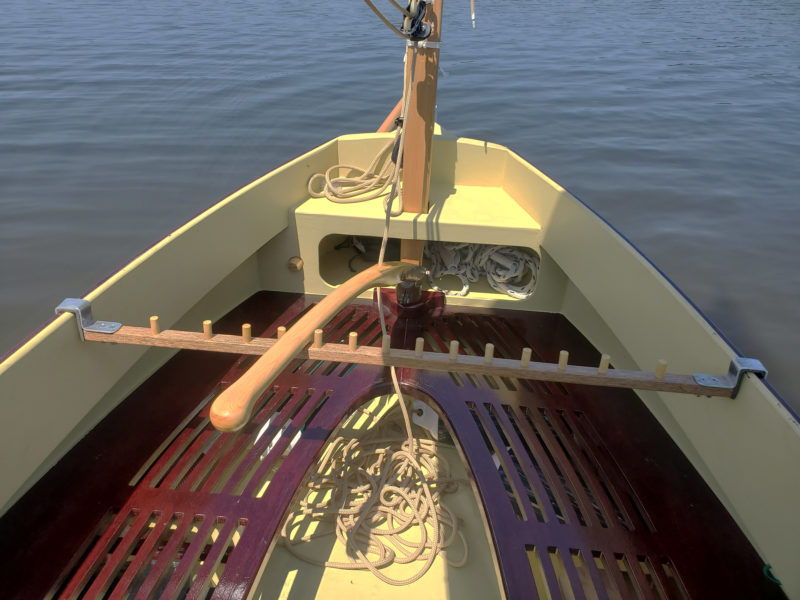 Dave Dawson
Dave DawsonThis simple shop-made tiller comb drops in place in a few seconds and can be removed even quicker. The length of the comb and the fittings on its ends are determined by the boat it’s built for.
Dave Dawson has owned several boats and has tried a number of devices to hold their tillers to free both hands so he can relax or tend to other tasks. None of the bungee cords, ropes, and commercial tiller clutches he tried worked with a quick one-handed motion, so when it came to outfitting his canoe yawl, TERRAPIN, with a tiller minder, he decided on a simple, old-school comb. All it required was bits of wood and metal he already had on hand and an enjoyable afternoon in his shop.
In TERRAPIN, a Chesapeake Light Craft Autumn Leaves, the comb spanned the cockpit to accommodate the tiller’s full range of motion. The crosspiece, a length of 1″ x 3/4″ mahogany, has at each end an aluminum bracket that drops over the coamings. The brackets are bent from flat bar and lined with a thin minicell foam to hold the comb snug and protect the coaming’s varnish. The comb tines are 1/2″ dowels and their spacing was worked out in the boat, as the tiller requires a wider gap between them when hard over than it does when it is set amidships. The outermost pins hold the tiller in a position for heaving-to.
It’s easy to raise the tiller to steer or make course adjustments, then set it between pegs when the boat is on the right track. When the comb is no longer needed, it lifts free quickly and is put aside.
Portable Bench Vise
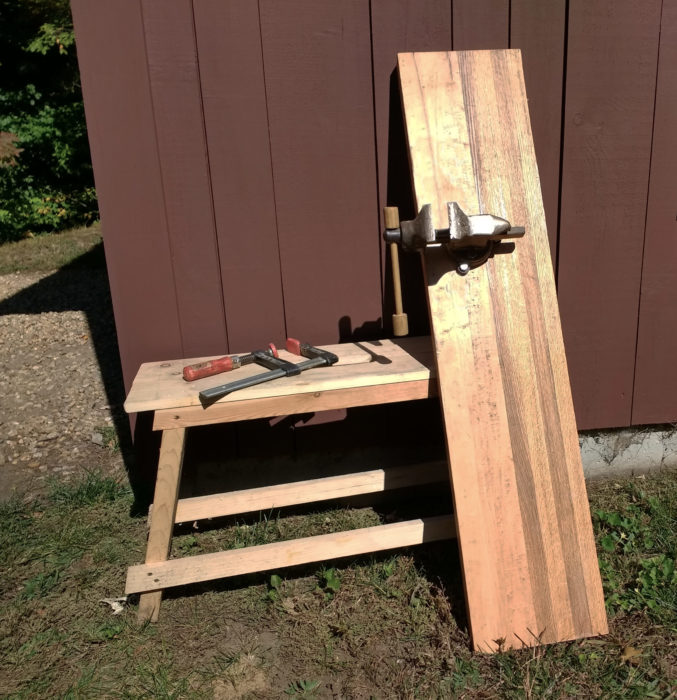 Tom DeVries
Tom DeVriesWith a small bench, a pair of clamps, and a vise mounted on a thick plank, Tom DeVries can set up a workstation wherever the work is.
Tom DeVries bought a 4″ bench vise at a second-hand store—it was especially cheap because it was missing its handle, remedied with a lathe-turned length of ash—but he didn’t mount it on his workbench. Bolting the vise to its top would create an obstacle to projects that require the bench’s whole surface and its smooth and clean top was too nice to subject to the dings, burns, and sharp filings of metalwork that come with using a bench vise. Instead, he mounted the vise on a 48″ x 10″ remnant of butcher block (a similar length of heavy plank would do as well). Countersinks on the bottom keep the mounting bolts from protruding. When he needs a vise in his shop, he clamps the vise’s plank to the workbench.
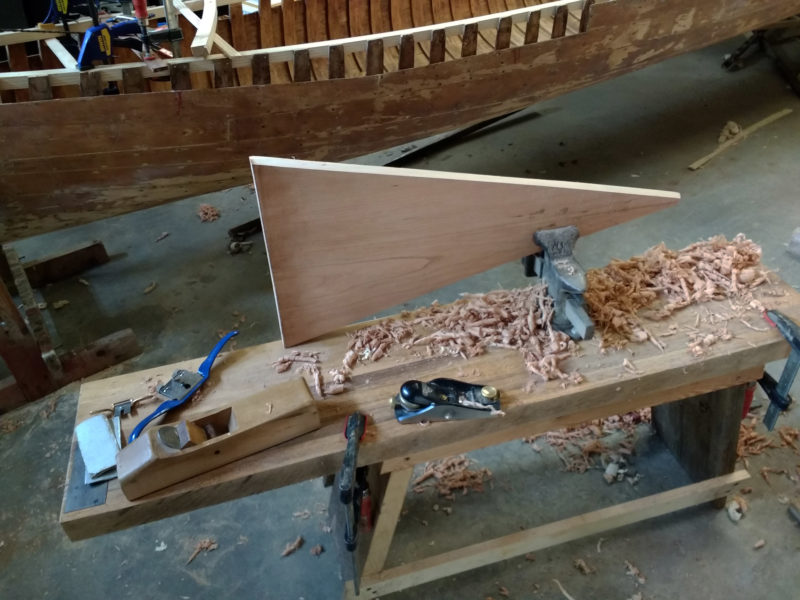 Tom DeVries
Tom DeVriesTo fit the decks of an old wood-and-canvas canoe, the vise can be set just a step or two from the canoe’s end.
For projects that don’t fit in his shop, like the 19′ wood-and-canvas canoe he restored, Tom clamps the portable vise on sawhorses or a short stool. The portable vise has also come in handy when he has worked on boats at the dock.
Vinyl Lattice Trailer Deck
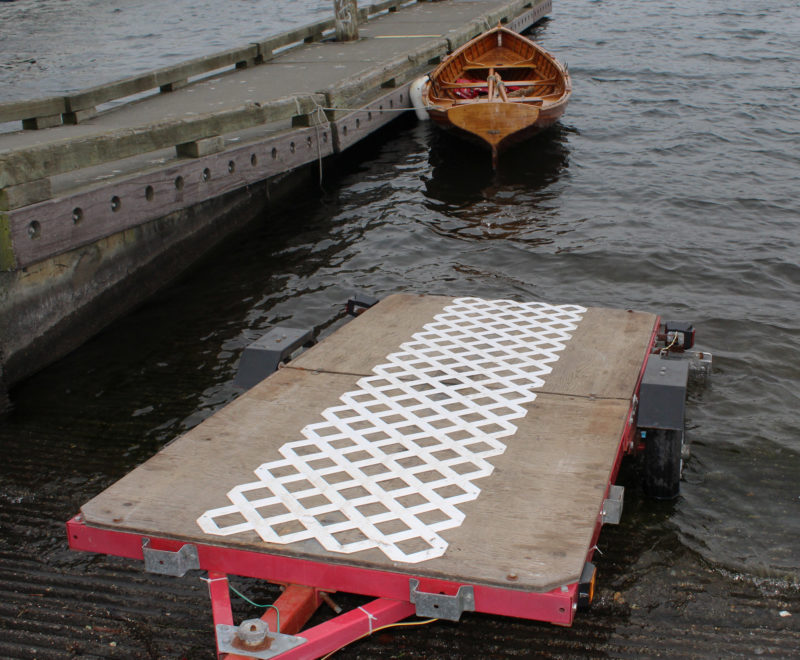 Christopher Cunningham
Christopher CunninghamThe plywood deck of this utility trailer created a lot of friction when the Whitehall was dragged across it. The vinyl lattice made launching and retrieval much easier and wasn’t so slippery that the boat wouldn’t stay put when unstrapped at the ramp.
John Ernst has been using vinyl lattice on his boat trailer for years. The vinyl provides a low-friction surface for sliding a boat across a plywood trailer deck and the grid pattern offers enough grip for shoes. The lattice, available at home-improvement stores, is inexpensive—$21 for a 4′ x 8′ sheet and $13 for a 2′ x 8′ sheet. It is 1/5″ thick, easily cut with woodworking tools, and gets screwed down with flathead screws, just slightly countersunk.
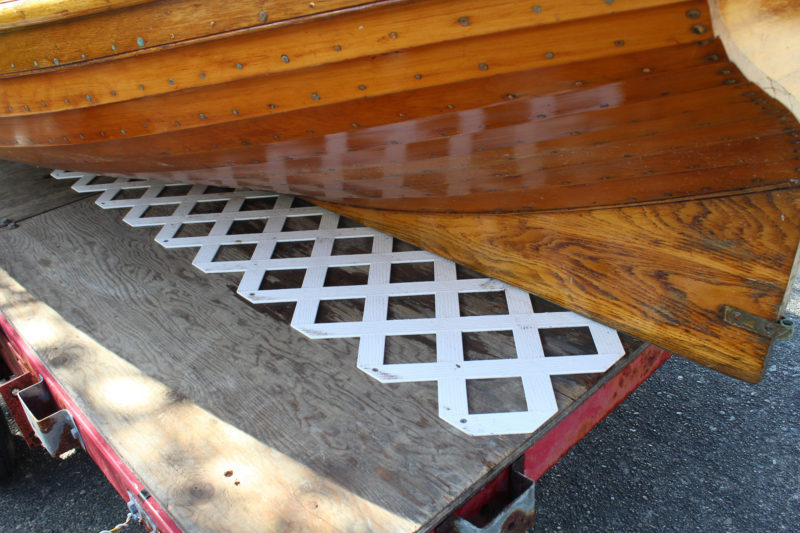 Christopher Cunningham
Christopher CunninghamThe lattice is set back from the edge of the plywood so it won’t get snagged when lifting the bow to the trailer bed.
The lattice is flexible and can fit curved surfaces. John also uses lattice sheets laid on the ground to slide boats easily and without damage over cobble.
Rust Erasers
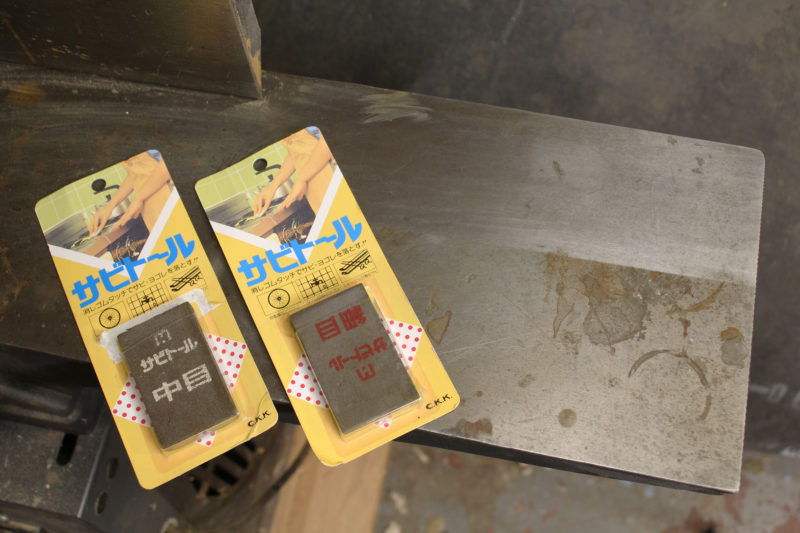 Christopher Cunningham
Christopher CunninghamThe jointer’s bed has been discolored by wet things set on it. The rust erasers remedy the damage.
Rod Koozmin runs a sharpening business, so he’s seen a lot of rusty knives and tools. To get them shiny clean again, he uses rust erasers. They’re made of a rubbery compound mixed with silicon-carbide grit and can be used dry or soaked in water before use. Rod also uses them with WD-40 to float away the abraded rust. He has used several different brands and favors those made in Japan, but notes they’re all good. The Japanese rust erasers here made by Kuniyoshi are sold by Amazon in pairs—one medium grit, one fine—for $18. Each polished section of all of these tools in the editor’s shop was done in less than a minute, using erasers soaked in water.
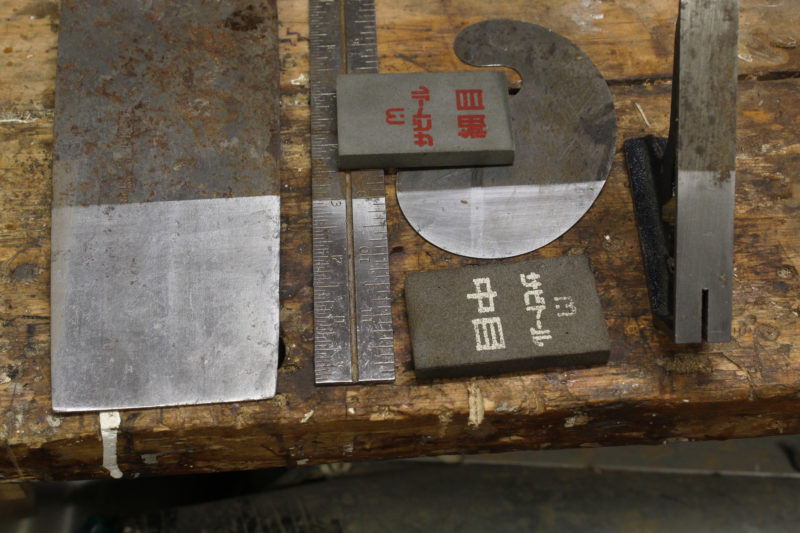 Christopher Cunningham
Christopher CunninghamA few seconds of scrubbing with these two rust erasers brightened the steel of (from left to right) a Chinese cleaver, a combination-square ruler, a scraper, and the combination-square body.
Stubborn rust spots can be worked quickly by using the edge of an eraser, which concentrates the effort in a smaller area. The rubbery compound is quite durable and doesn’t noticeably erode with use. Because there is grit all the way through the eraser, it will continue to work even when it does wear away.
Rowing Hoop
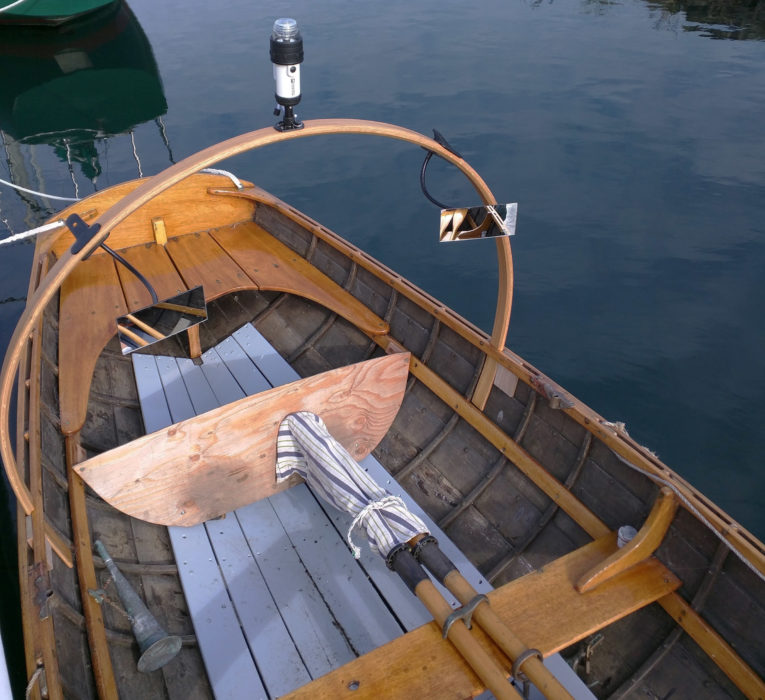 Jim Tolpin
Jim TolpinJim Tolpin’s hoop supports an all-around white light high enough to to be seen from all directions and not interfere with his ability to see at dark. The mirrors let him keep close tabs on what’s ahead.
The diminishing daylight hours of fall and winter weren’t going to keep Jim Tolpin from rowing, but he needed to do something to improve his visibility, both seeing and being seen, at dawn. Front-view mirrors would take care of the former, and a battery-powered all-around white navigation light would address the latter, he just needed a place to mount them. A post anchored on the centerline could work, but it would make it difficult to move about in the boat and require a likely obtrusive fitting to anchor it, so Jim created a hoop to support mirrors and a light. It is a laminate of four strips of 3/16″ white oak. The ends are thinner, sized to slip between the inwales and the sheer plank.
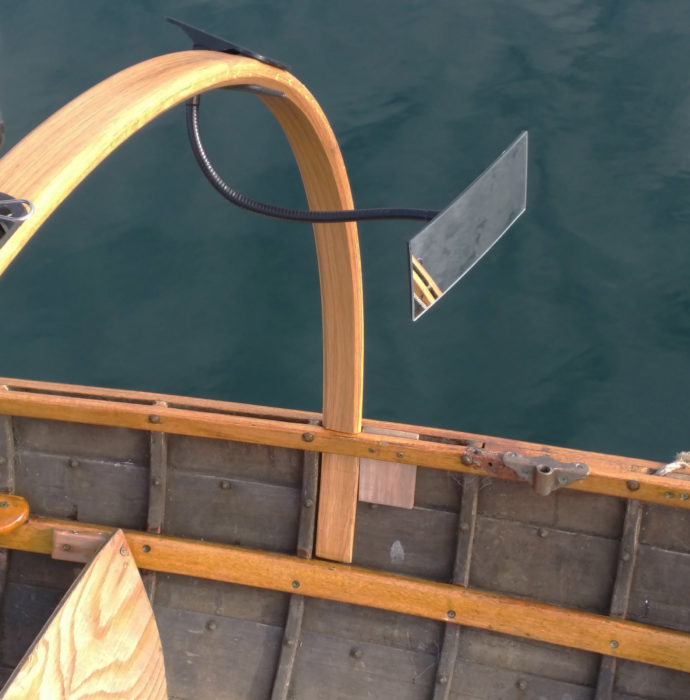 Jim Tolpin
Jim TolpinThe mirrors were designed for computer work stations. They’re slightly convex to give a wide-angle view over the bow.
The hoop is kept upright by a steam-bent frame on one side and a block screwed to the inwale on the other. The hoop is high enough to keep the white light out of his line of sight; wearing a baseball cap conceals it entirely. The mirrors are designed for computer work stations and each has a spring clamp and a flexible neck. The slightly convex mirrors provide a wide view with distances a bit foreshortened. They’re not designed for outdoor use, so the metal will corrode if not greased or coated with anti-seize compound. The hoop is strong enough to use as a handhold while getting in and out of the boat. It’s easy to imagine making a second hoop for the bow to support a canopy.![]()
You can share your tips and tricks of the trade with other Small Boats Magazine readers by sending us an email.
Comments:
We welcome your comments about this article. If you’d like to include a photo or a video with your comment, please email the file or link.

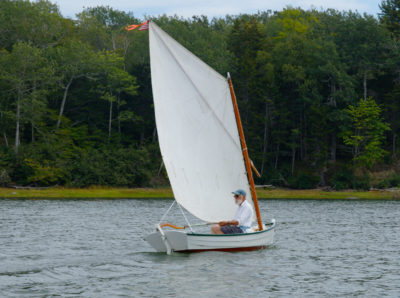
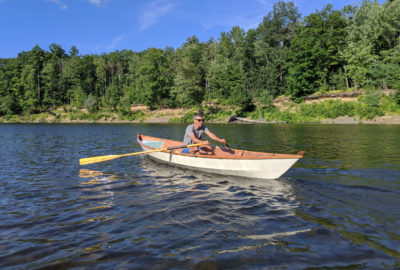

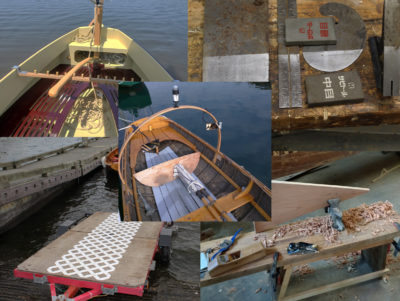
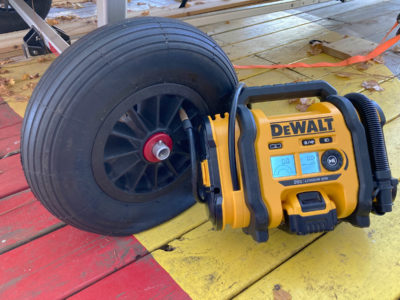
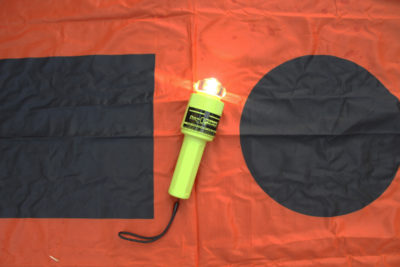
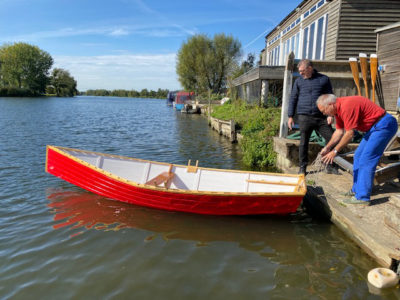
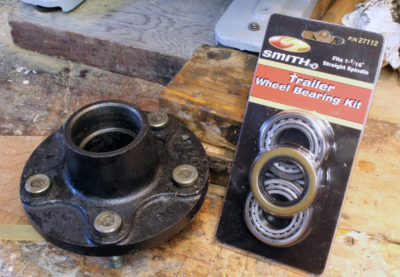
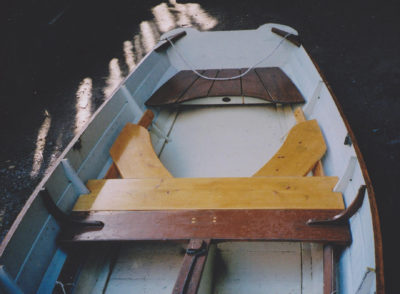
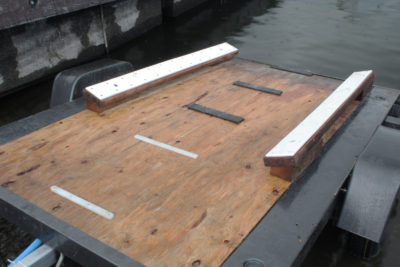
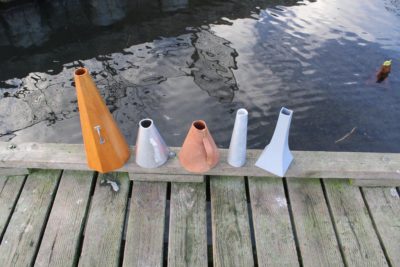
Rowing mirrors!
Great idea!
Robert
John Ernst……….Hot Dang…..Son of a Gun….And, the oft repeated…Why didn’t I think of that?…
Well done…
and Thank You…
Great ideas, all! For a “portable” metal vise I bolted one to a square bench hook, which has a lower lip that protrudes down into the wood vise on my workbench for those rare times I want to work metal. For portability, I installed a workbench wood vise on the side of a heavy duty, but low, sawhorse. It was for my 7-year-old grandson to use as a workbench but I borrow it for quick sawdust jobs outside. Like clamps, one can never have too many vises….
Thanks for the tips. Especially the rust removers. I have repaired an old saw week ago and this would be perfect help for that. So for next job I need to order these.
I was thinking about something similar for the tiller on my Jolle. Actually something more precise. Now I have only rope and cleat for the center position, which is actually not always “center” (wind, etc). I use that mainly when I’m rigging the sails, which results many times in huge curve not a straight course.
The vise and plank is always a good idea. I have one small wise on smaller plank for precise things, but not to be able to bring it out of my workshop, but not to fill my bench with many such things I do not need often. But it is probably time to mount one big old one from my grandfather on some big plank to utilize it outside, instead of letting it rest somewhere in the corner.
The tiller comb is nicely executed. I’ve had one on my Tancook, used on a Norwegian Lesatabåt, and on an 1890s sailing canoe. One was reviewed in SBM a month or two ago, and I look forward to installing it on my lugger.
The hoop mirror system solve a problem that many rowing craft have, namely how to fit mirror high enough to be useful. Typically some sort of strut is used but you have to engineer a mount. I have a set of rowlock sockets aft in my dory and I think I’ll try with a hoop of PVC that I use for its winter cover.
An update on the rowing mirrors: I eventually replaced the two computer station mirrors (which were indeed starting to corrode) with a marine-grade ski-tow mirror. Its a bit bigger than I like, but it should stand up much longer to the elements.
Hi Jim,
I like your hoop idea especially now as I age I find that my neck seems to resist turning very far. Also, your boat looks quite similar to one I own…a Shew and Burnham “Whitehall”… my dad had ours built by them in the mid ’70s. It rows like a dream.
Thanks,
Alan Dater
Putney, VT
All good, and images that can (and I hope do) get stuck in this head!
I know that some day I’ll use something here to make my world better.
Thanks!
Rob K.
I like the hoop idea. It would be good for holding the tarp for dinghy camping. It would definitely provide more room.